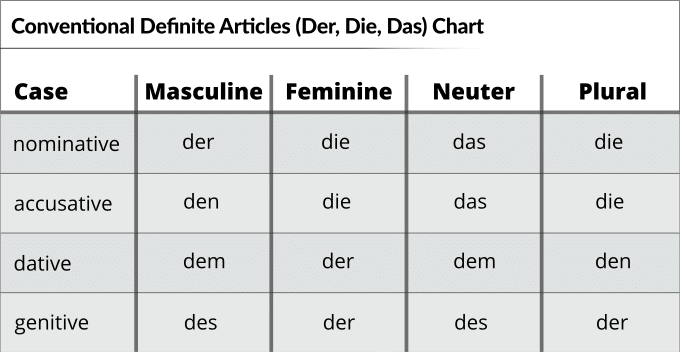In December of 2023, I was enrolled in an intensive German class while living in Hamburg, doubtful that I would be investing in the next level of the course. Though I had a friendly teacher and classmates who chose to be there (not always a guarantee), I could tell that the environment wasn’t conducive to making real progress in German. As a beginner, I was learning vocabulary one themed list at a time, trying to juggle grammar rules and their exceptions, and hearing questionable pronunciations from my peers, all while this chart stared at me from the wall:

Though I didn’t want to continue taking the class (and frankly, didn’t have another €339 to shell out for the next installment), I also didn’t know what else to turn to. Should I crawl back to Duolingo? Dust off Rosetta Stone? Trust one of the millions of other apps and services that promises fluency in 30 days with 30 seconds a day?
Then, I stumbled across a video on YouTube from a college professor, explaining a few fundamental ideas that forever changed the way I approach language learning. One of those concepts was the difference between language learning and acquisition. Another was comprehensible input, which I’ll spell out for you here.
In order to acquire a language, you need a lot of input. This encompasses all of the linguistic information going into your brain, whether it is spoken, signed, or written. It contrasts output, which is language that you produce yourself. As an infant, you were ideally raised in a linguistically rich environment, where adults read and sang to you, talked amongst themselves in your presence, and maybe even spoke to you in a slow, exaggerated, and enthusiastic way (so-called Parentese).
Your goal now, as an adult language learner, should be to create a linguistically rich environment in your target language. If you live in a country where the language is spoken, you might be able to accomplish this through regular interaction with native speakers, what many of us consider to be immersion. However, if you don’t have access to native speakers in your daily life, you can easily use media to increase your exposure to the language: movies, TV shows, podcasts, audiobooks, or my all-time favorite, YouTube videos.
When you were a baby, acquiring language was basically your full-time job (along with your side gigs of eating puréed sweet potato and trying to figure out who that other baby in the mirror was). Now, you might have a real job, and your time is precious. How do you get the most value out of the input that you expose yourself to?
Comprehensible input, as the name suggests, is input that you can understand, at least to a degree. The input hypothesis, one of five hypotheses of second language learning and acquisition proposed by psychologist Stephen Krashen, posits that we acquire language when we understand structures that are “a bit beyond our current level of competence.” Krashen defines comprehensible input as i + 1, with i being what you can currently apprehend, and + 1 being an extra challenge, such as a vocabulary term or grammar concept you’re yet unfamiliar with.
Essentially, whatever media you consume should be mentally stimulating to the point that you gain something from it, but not so challenging that it’s a fight to try and understand it. It can be tricky to find that sweet spot. The good news is, there are ways to make a resource more comprehensible if it feels just beyond your reach. For example, if you’re an intermediate learner but struggle with listening to podcasts in your target language, try reading the transcript, watching the video recording, or decreasing the speed. Being able to read the words as you listen or see the facial expressions and gestures of the hosts may boost your comprehension, and slowing it down helps you parse out the individual words more easily.
For beginners, you might find that dedicated instructional resources based on comprehensible input are the most helpful. There are many language teachers online who make videos where they intentionally speak slowly and with simple vocabulary, using plenty of visual aids like pictures or gestures to help you understand. I relied on Natürlich German in the early days of my German comprehensible input journey, and as I worked through her videos that incrementally increased in difficulty, I built the confidence I needed to explore other content.
I was relieved to learn that when it comes to language acquisition, more challenging material is not necessarily better. If visual aids and subtitles (in the target language) make things easier for you to understand and therefore more able to stay engaged, then they are beneficial to your acquisition. In contrast, if keeping up with the material is too strenuous, you won’t acquire as much from it, and it might crush your motivation.
Similarly, the content should be compelling to you based on your unique interests. You don’t get any bonus points for suffering through watching the news or reading dense medieval texts if those are activities you don’t enjoy. Try finding content that resembles what you already like to watch, read, or listen to in your native language.
For finding language instruction videos based on comprehensible input, also called the natural approach, online forums are your friend. The same goes for finding good quality native content that other language learners can vouch for. It’s important to note that if you search for “German for beginners” on YouTube, as an example, many videos that appear in the results will not follow an input-based approach. If they are only telling you a predetermined list of words or phrases in German, and using a lot of English to explain what they mean, you aren’t going to benefit as much from it (unless you truly are only interested in learning a handful of phrases).
You’re probably not going to understand every word of what you watch, read, or listen to, that’s the whole point. Acquiring a language is an endless journey of discovery, and that’s what makes it fun. I used to think learning a new language was supposed to be a struggle, and that being disciplined and pushing through was how you made progress. It can be a challenge sometimes, but more than anything it should feel rewarding. Nothing compares to the moment when you feel things finally click.
If you have a question (or five), please reach out.
What I like about a comprehensible input-based approach
(Post within a post—postception!)
It can be done independently.
If you don’t have access to courses or can’t afford costly learning materials, that’s no problem. YouTube, your favorite podcasting app, and any streaming services you’re already subscribed to are at your service. If you would like some more structure, seek out courses and other materials that teach using input-based instruction. While I’m perfectly content guiding my own learning, I know that the community aspect of following a course can be motivating for many people, so that’s something you can consider.
You learn how real people talk and get exposed to valuable cultural context.
Many second language learners know the struggle of learning one thing in the classroom and hearing something completely different in a real-life interaction. Native speakers use slang, talk quickly, and may pronounce things differently from how you were taught. Not to mention some languages have many dialects, while most language courses only focus on the “standard.” When you expose yourself to content in your target language, you learn how natural speech sounds and get an introduction to the culture of that part of the world.
You’re not being graded.
There are no reading or listening comprehension exercises with questions at the end. You judge the value of a resource based on whether you understand it and whether you enjoy it. If you don’t understand it yet, try moving on and coming back to it another time. If you didn’t enjoy it, feel free to never come back to it. You can prioritize staying engaged with the language over constantly measuring your competency. Still, if you like the idea of creating assignments for yourself, like writing a journal entry after you watch a movie in your target language, go for it.
It feels so much more satisfying.
In a traditional language class, you are given vocabulary worksheets that tell you that apple = Apfel and so on (come on, don’t insult my intelligence!). Since I’ve switched to an approach centered on comprehensible input, I let my brain take on the challenge of deciphering meaning, which it is more than capable of doing. You feel a greater sense of accomplishment when you’re able to discern what is being said without being explicitly taught each word. You might have to hear a word 100 times to truly grasp the meaning of it, but once you do, you’ll never forget it. It has also given me a much more confident ability to decode the meaning of new words, and I reach for the dictionary much less than I used to.
It’s self-directed.
You’re allowed to customize your routine as much as you please based on your interests and the formats that you enjoy most. I like to watch YouTube videos about science in German and balance it out with a healthy dose of reality TV. If you prefer reading the news or watching telenovelas, you do you. When you choose to consume media on topics that you are interested in, the vocabulary you pick up will be actually relevant to you and your life, unlike generic lists and flashcard decks. If you currently enjoy using any language learning apps, classes, or workbooks, you can build those into your practice too, alongside ample comprehensible input.
Recommended viewing
These videos do a great job of concisely explaining what comprehensible input is and why it is vital if you’re striving for fluency in a language.
You can also watch the video that originally sent me down the language acquisition rabbit hole. It’s significantly longer, but shows how these concepts can be applied in practice (and features Stephen Krashen himself!).




